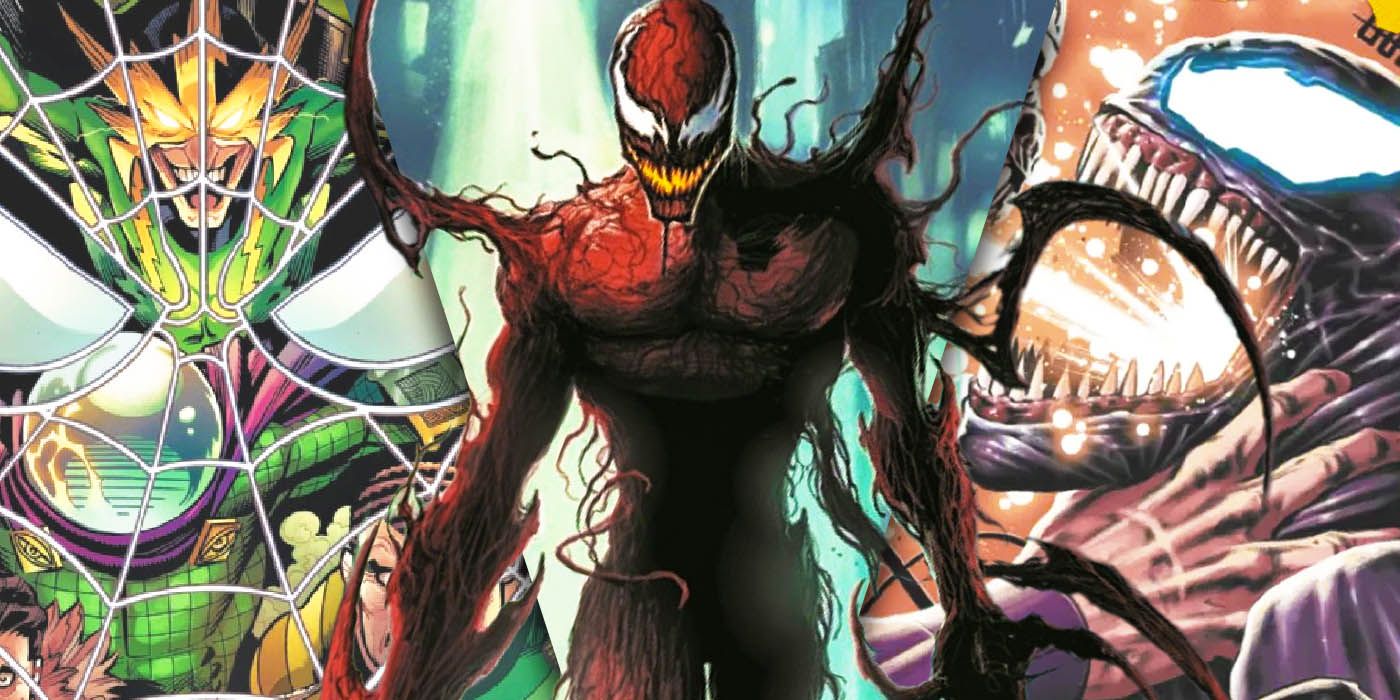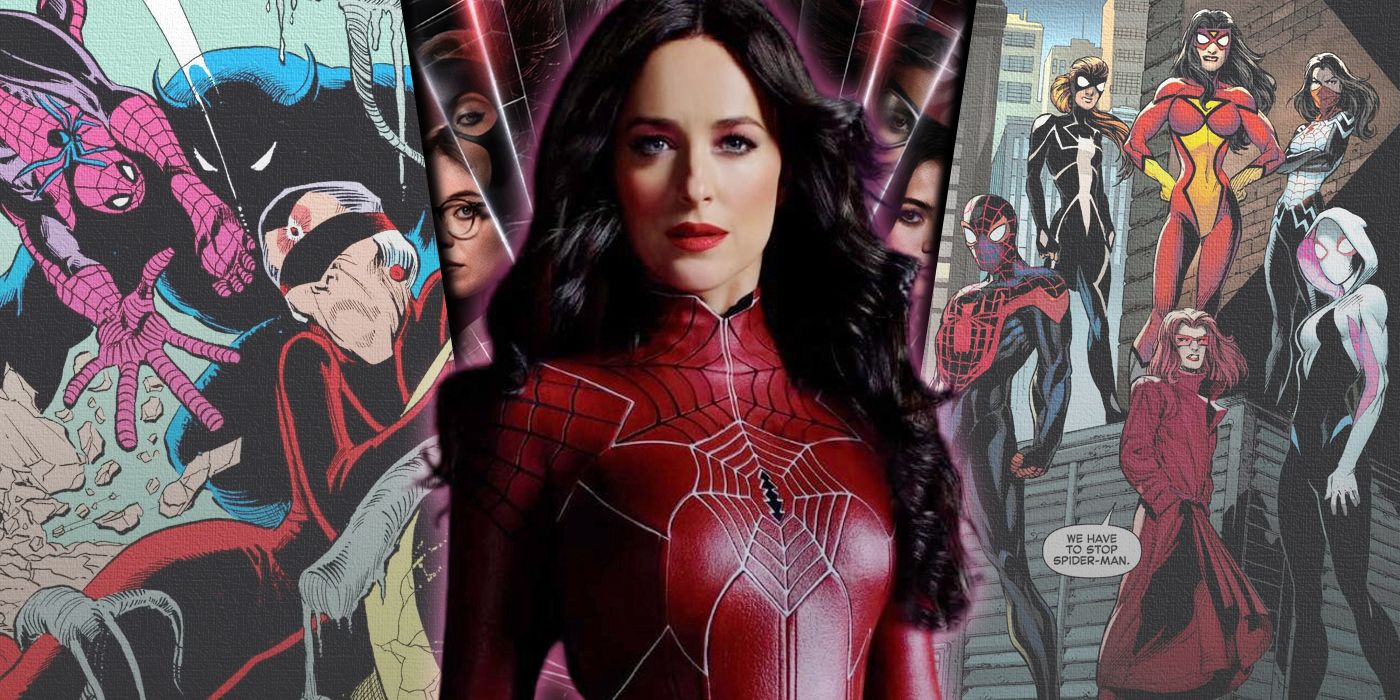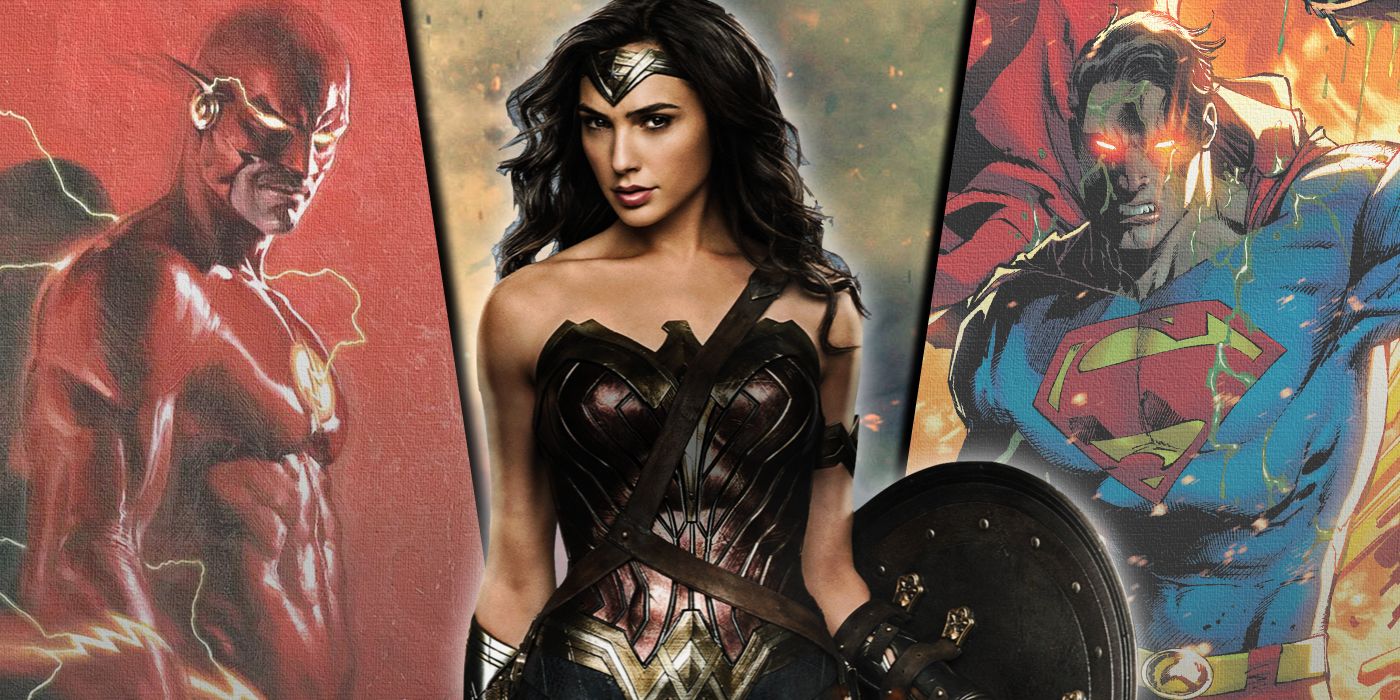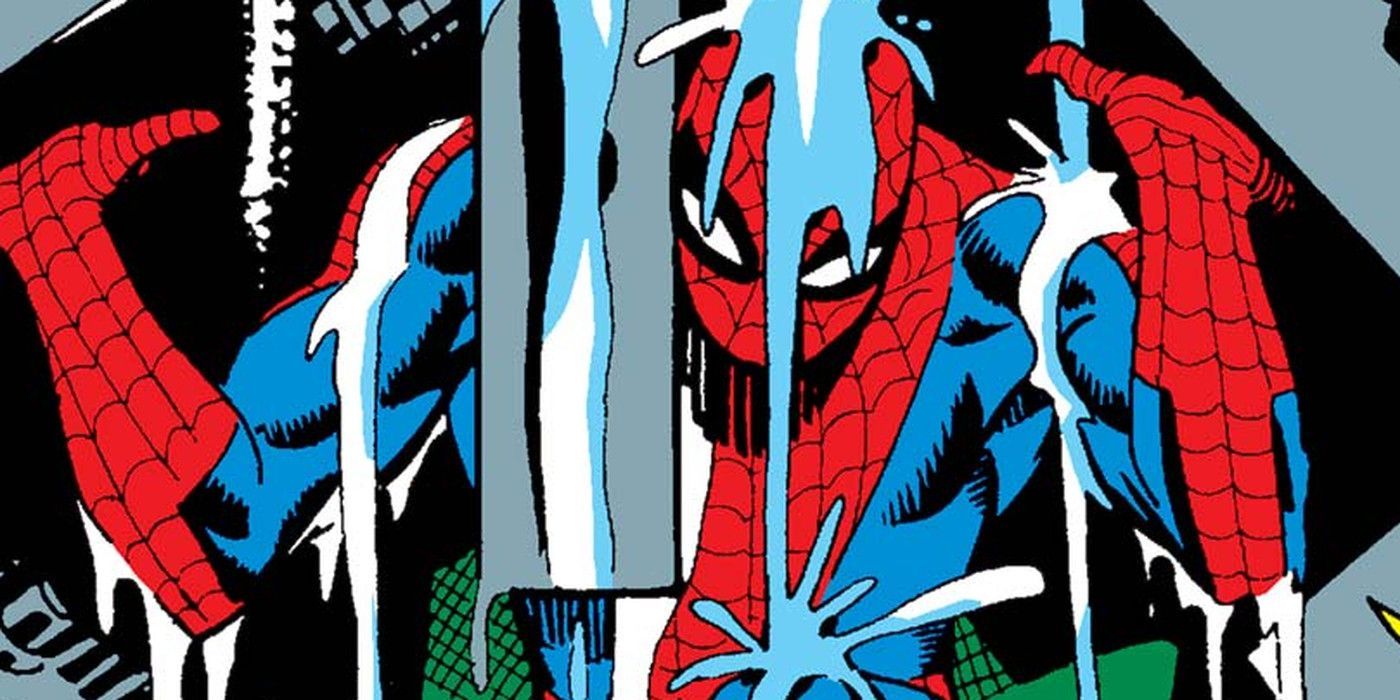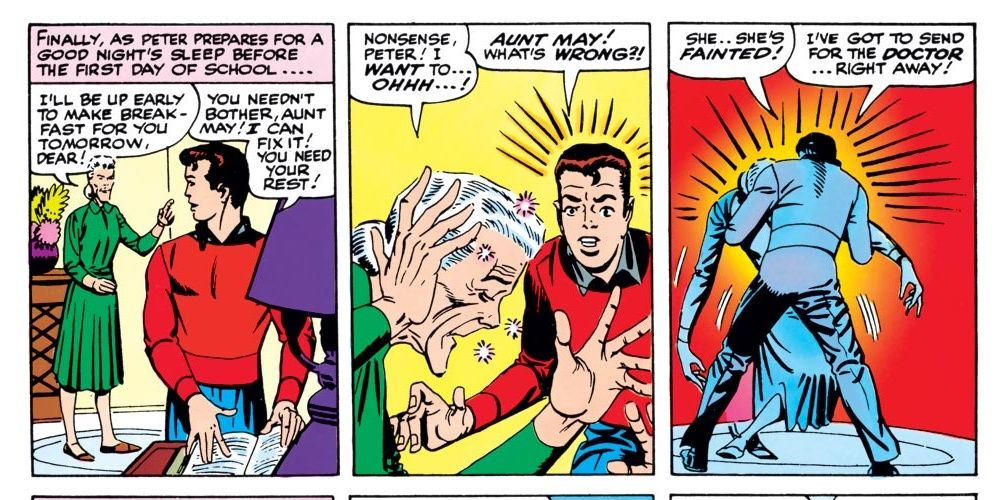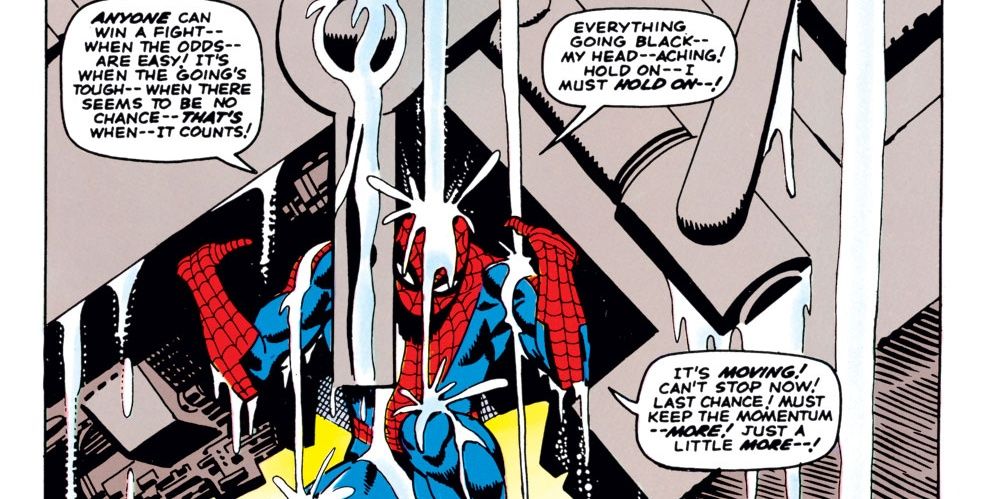In Marvel Comics, tragedy has always followed Peter Parker like a shadow, forcing him to make harsh and sometimes terrible decisions that have only plunged him further into misery. In recent years, fans have been increasingly displeased with Marvel Comics' treatment of their most bankable character, as Peter's unlucky streak overshadows Spider-Man's heroic exploits at every juncture. While the editorial decision to keep the Wall-Crawler's bleak status quo intact is somewhat to blame, there was a time in the Wallcrawler's formative years when his mistakes and misfortunes weren't the sum total of his characterization. Instead, they were the hurdles he needed to climb to become a true hero.
Swinging into action in the summer of '62, Spider-Man didn't take long to swing into the hearts of comic book readers. Stan Lee and Steve Ditko had created an approachable superhero whose woes were relatable to the common folk, making Spider-Man a working-class hero. His alter-ego Peter Parker was a just kid who still had the weight of the world on his shoulders. Unfortunately, poor Peter would be struck with one tragedy after another, both in his private and costumed lives. Still, he continued fighting regardless of the challenges the world threw at him. Nowhere is this more prominent than in the 1965 storyline "If This Be My Destiny." While Spider-Man had been around for a while at that point, this is where the character first proved his indomitable spirit.
Stan Lee and Steve Ditko Set The Foundations Of The Characters Very Early On
"If This Be My Destiny" was a three-issue issue story arc starting with The Amazing Spider-Man #31 (by Stan Lee, Steve Ditko and Sam Rosen) that pitted the friendly neighborhood web-slinger against a hi-tech criminal organization and its mysterious Master Planner. Spider-Man was no longer a novice crime fighter at this point, and had a string of victories under his belt. Peter was also flourishing in his private life, attending the prestigious Empire State University as a science scholarship student. After Uncle Ben's sudden demise, it had been a long time since the Parkers had celebrated anything. When Parker's Aunt May came down with a life-threatening sickness that doctors couldn't decipher, Peter was overwhelmed by the idea that he might lose his one remaining parental figure.
At this point, Peter pawned his precious chemistry set his uncle had given him to raise money for his aunt's treatment. Receeding within himself, Peter Parker lost touch with his new classmates, who mistook his sadness for aloofness. Yet inside, the young man was facing a crisis worse than any supervillain. Just when things couldn't get any worse, Peter learned that his Aunt's unexpected malady was his fault.
Issues prior, Peter had given his Aunt May a blood transfusion. Now, his radioactive blood was progressively killing her. Peter lashed out at everything and everyone around him in response, terribly reminded of his uncle's death from his mistakes. However, Aunt May's condition was the direct result of Peter's well-intentioned actions. All of this seemed to change Peter. As Spider-Man, his funny bone had slowly become his defining feature, as he taunted his foes and delighted his fans with a constant stream of character-defining quips. However, caught in a downward spiral, Spider-Man seemed to lose his chatty sense of humor at this point. Instead of jokes and deflections, Spider-Man was suddenly defined by his rage.
Steve Ditko plotted this story arc like a series of Herculean labors designed around a MacGuffin. Spider-Man moves from checkpoint to checkpoint before he makes it to the final boss, his longstanding nemesis Doctor Octopus. However, to get to the final boss, Peter has to overcome a series of insurmountable obstacles. As the Web-Slinger breaks into mob hideouts looking for answers, he's left his jokes behind, and Ditko's frenetic art shows him attacking foes like a wild animal, disregarding his own safety and the well-being of his human punching bags.
Spider-Man's struggle comes to a head in the final issue when the Wall-Crawler finds himself trapped under rubble after a tussle with Doc Ock. Ditko shifts to a second-by-second breakdown before jumping from scene to scene, alternating his panels between an ailing Aunt May on her deathbed, a canister containing her cure, the hired goons waiting for Spider-Man's appearance, and the trapped hero. Peter's emotional pressure had manifested as physical weight, slowly crushing him to death. It's only the memory of his vow to Uncle Ben, and the knowledge that his Aunt May will die without him, that gives him the strength to break free.
Ditko's illustrations go into great detail here, showing Spider-Man's every exasperating moment in tandem with Lee's narration that translates Peter's impossible efforts into words. His escape here is as metaphorical as it is physical. He couldn't do it for himself but because of his love for his family, Spider-Man's able to survive and carry on his mission in the world.
Peter's Grit Is More Important Than His Bad Luck
"If This Be My Destiny" came at the high point of Stan Lee and Steve Ditko's working relationship. Impressed by Ditko's ability to churn out compelling storylines, Lee started working closely with Ditko, eventually collaborating on The Amazing Spider-Man series. The first few issues teamed the Wall-Crawler with other Marvel heroes, like the Fantastic Four. But as fate would have it, Ditko's personal philosophy started infiltrating his plots. For Stan Lee, Spider-Man was a people's champion, a mouthpiece for liberal ideologies who, like every middle-class American citizen, looked out for his family and neighborhood.
However, Steve Ditko was an Objectivist and believed that heroes need to overcome challenges through individual force of will. As a result, Ditko's Spider-Man moved away from superhero team-ups and started facing his foes head-on. This also gave Ditko a chance to create more challenging circumstances for Spider-Man, plunging him deeper into a well of despair and letting him claw his way out of them to build his character. These kinds of narratives are familiar to Batman fans but they made the Friendly Neighborhood Spider-Man feel a lot less friendly.
Stan Lee and Ditko had a fundamental disagreement about who Spider-Man was and who he needed to be. They parted ways after thirty-eight issues but Ditko had already made an enormous impact on Spider-Man's mythology. "If This Be My Destiny" was one of the earliest examples of "Parker Luck," the eternal series of misfortunes that seems to define Spider-Man and is intended to make him more relatable than heroes like Superman. Ditko left the title, but he'd already changed Spider-Man's default status quo. In the modern era, Marvel's editorial team has tried to replicate his success in this regard by placing the Wall-Crawler in a series of terrible situations. However, it has reached the point where this grind is affecting not just Spider-Man's personal life but how his fans see him. They've lost the balance between Ditko's grim vision of a broken hero and Lee's bright, carefree champion.
Stan Lee always said, "Anyone can be Spider-Man," and it's obvious that he didn't mean people could be superhuman if they just tried hard enough. However, as a working-class hero, Spider-Man is in some ways a very normal person. His sheer willpower and ability to get back up after losing defines him as much as his Spider-powers and his honest selflessness makes him a hero. Despite their differences, Spider-Man's creators would agree that Peter's determination and decency set him apart from ordinary people and from other metahumans. He's the embodiment of hope in the Marvel universe, a single man against the world and its machinations carrying hope's unbearable weight on his shoulders.


